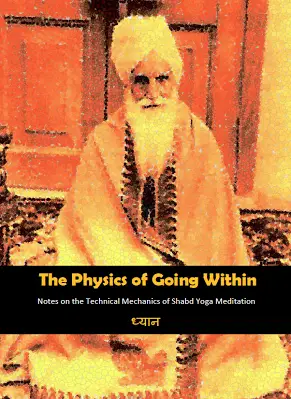TRANSLATE THIS ARTICLE
Integral World: Exploring Theories of Everything
An independent forum for a critical discussion of the integral philosophy of Ken Wilber
 David Christopher Lane David Christopher Lane, Ph.D.
Professor of Philosophy, Mt. San Antonio College Lecturer in Religious Studies, California State University, Long Beach Author of Exposing Cults: When the Skeptical Mind Confronts the Mystical (New York and London: Garland Publishers, 1994) and The Radhasoami Tradition: A Critical History of Guru Succession (New York and London: Garland Publishers, 1992).  Andrea Diem-Lane Andrea Diem-Lane is a tenured Professor of Philosophy at Mt. San Antonio College, where she has been teaching since 1991. Professor Diem has published several scholarly books and articles, including The Gnostic Mystery and When Gods Decay. She is married to Dr. David Lane, with whom she has two children, Shaun-Michael and Kelly-Joseph. SEE MORE ESSAYS WRITTEN BY DAVID LANE
THE PHYSICS OF
GOING WITHIN
Further Notes on the Technical
Mechanics of Shabd Yoga Meditation
David Lane and Andrea Diem-Lane
“The first leg of meditation is mechanical”
Perhaps the secret to deep concentration in meditation resides in how well we can thicken (or immerse) our focus in any particular moment.
In analyzing shabd yoga from a more dispassionate viewpoint (putting in brackets such spiritualized concepts as guru-bhakti and grace), it is possible to breakdown the meditation technique into precise components. Such an analysis allows one to understand the process from a different vantage point, which in itself may be both instructive and helpful for the neophyte.
Saying the five name mantra that is given at the time of initiation in almost all Radhasoami Beas-related satsangs in India and elsewhere (similar to the Gnostic notion of inner archons) silently but methodically takes anywhere from 5 to 8 seconds. Roughly speaking we can repeat this mantra about 8 times a minute, give or take a couple rounds. If one meditates 2 hours it translates as about 1000 rounds of repetition.
The 8 second mantra can be broken down further to its separate words: First name (1 second plus), Second name (1 second or less?), and so on. In terms of computational language, each letter equals a byte. If we include the spaces between each word, the entire five-name mantra is equal to 42 bytes of information.
[SIDENOTE: Of course the number 42 was made famous by Douglas Adams in his widely read science fiction novel, The Hitchhiker's Guide to the Universe, where he alleges that the natural number is the “Answer to the Ultimate Question of Life, the Universe, and Everything.” It also has the distinction of being known by computer programmers as a wildcard since it is represented by an asterisk. It is also the atomic number of molybdenum.]

Thus 2 hours of simran (repetition of a sacred word or words) arguably equals 42,000 bytes or approximately 41 kilobytes. Since the object of repetition is concentration, the key is to see how focused the mind can be in any singular moment. But exactly what is a moment in awareness? In the mid-19th century Hermann Helmholtz and his assistant Wilhelm Wundt studied how fast nerve impulses traveled which turned out be much slower than first expected. Whatever we might presume about “immediate” one thing is certainly clear: it is never instantaneous. As John McCrone explains:
“Modern research has since shown that human nerves actually conduct at a whole range of speeds, the rate depending on the size of the axon and also the thickness of a fatty insulation material, known as myelin, wrapped around it. The nervous system is like a road network with a few fast motorways and many winding country lanes. Large, heavily myelinated nerves—such as the muscle and sensory nerves which must run the length of the body—transmit their impulses at up to 240 miles per hour. But the congested network of small unmyelinated nerves which make up the bulk of our brain, work much more slowly. Once inside our heads, impulses tend to crawl along at between two and 20 miles per hour. What such conduction speeds mean is that while consciousness might be fast, it cannot be instant. It takes a minimum of 10 to 20 milliseconds (thousandths of a second) for any sensory message to reach the brain. After that, the brain must spend yet more time in evolving a response.“
An easy way to grasp the significance of this is to see how easily the brain can be duped into believing that still pictures are moving when they are shown in rapid succession (usually 24 plus frames per second). We tend to “blur” any image that is shown sequentially in less than 50 milliseconds. Accordingly, a perceptual moment apparently can range anywhere from a minimum of 40 milliseconds to 500 milliseconds. Or, as Benjamin Libet suggested there is a half-second delay relay in our perceptual awareness. No matter how we parse a moment, we know that it takes milliseconds for something to be perceived and that it can disappear within seconds.
By paying attention only to the word being repeated silently within, the moment gets occupied by the said word and hopefully with the next word and so on.
However, within these segregated instances the mind often roams in and out of other thoughts that distract from the desired object of attention. The difficulty is that it is exceedingly troublesome to stay concentrated on any particular word or sequence of words consistently for a sustained duration of time. The end result is a lack of progress in meditation and the practitioner ends up spending more time either daydreaming or temporarily (if not more permanently) falling asleep.
Perhaps the secret to deep concentration in meditation resides in how well we can thicken (or immerse) our focus in any particular moment. By this, I mean increasing our ability to “stay” or “reside” within the stream of our repetition while centering on any emerging light that may arise.
Hence, in this context, meditation is not something we do for 2 hours at a stretch (though such a parameter may be our alarm clock goal) but rather developing our ability to keep fully focused for 8 seconds (or computationally 42 bytes). Of course, this can only be achieved if we can first master 500 milliseconds, 1 second, and so on.
However, if such concentration can be achieved certain telltale signs arise which can be both attractive and distracting. Distracting because when a certain level of concentration is achieved one tends to divert one's attention away from simran and start enjoying the increasing bliss of calmness. In addition when the body starts to go numb (due to the withdrawal of awareness from the sensory apparatus)[1] a certain anxiety arises as if something unusual is about to occur. This feeling of expectation increases as the concentration increases which conversely limits the continued withdrawal since one then gets distracted anew by the surprising sensation of unexpected numbness.
This is precisely when and where doing repetition within the series of moments gets more difficult, since keeping at the focus provides ancillary flashes of pleasure. If one can indeed stay focused, sparks of light begin to illuminate what otherwise appears to be mostly smeared darkness. Doing simran looking at the light (especially one particulate which stands out from the rest) actually increases one's concentration since it now occupies the visual sense, which prior had nothing to center on precisely.

If one can steady into the light and keep the mantra intact one's consciousness then starts to go consciously within, not dissimilar to the process of falling asleep except that in this case one's keen self- awareness and lucidity increase manifold, so much so, in point of fact, that there is a pulling sensation that emerges that tugs one into a different state of reflection.
In shabd yoga, however, the final pullout of awareness is optimized by listening to subtler and subtler sounds (usually musical in intonation, which in the preliminary stages is similar to cascading bells) which become markedly distinct as the concentration becomes steadfast within the eye focus. At this point, the danger is that such sounds distract one from repeating the mantra so that one can often get bifurcated and lose the full power of their leveraged concentration. It is perhaps for this reason that shabd yogis have suggested concentrating on simran and dhyan first without attending to the inner sounds that may arise.
If the simran is mastered to a significant degree the switchover to listening to the inner sound doesn't necessarily lessen the concentration that was gained by constant and attentive repetition, particularly if the sound is strong and pulling and provided one can become so absorbed into the sound wave as to ride with it and merge from which itself forms.
To Be Continued.
“Being still is a technical skill that can be learned”
NOTE
[1] See the article, The Science of Going Within, on Integral World, where we argued,
 gamma-Aminobutyric acid
gamma-Aminobutyric acid
“It appears that the same chemicals that keep your body relatively still while asleep and dreaming (where one might be surfing, jumping, or flying.... with arms and legs moving about in all sorts of rotations) may also be activated in deeper stages of meditation. The fundamental difference being that in dreaming one is usually unconscious of such chemical interferences whereas in shabd yoga one consciously feels the onslaught of these chemicals becoming operative. In a breakthrough study, two Canadian neuroscientists, Patricia Brooks and and John Peever, located two neurotransmitters which inhibit bodily movement when dreaming. As reported in the Journal of Neuroscience's press release, “During REM sleep—the deep sleep where most recalled dreams occur—muscles that move the eyes and those involved in breathing continue to move, but the most of the body's other muscles are stopped, potentially to prevent injury. In a series of experiments, University of Toronto neuroscientists Patricia L. Brooks and John H. Peever, PhD, found that the neurotransmitters gamma-aminobutyric acid (GABA) and glycine caused REM sleep paralysis in rats by “switching off” the specialized cells in the brain that allow muscles to be active. This finding reversed earlier beliefs that glycine was a lone inhibitor of these motor neurons.”
Interestingly, sleep paralysis, where one feels incapable of moving their body during sleep, which is on occasion accompanied by nightmares or visions, may offer a tantalizing clue to what may be transpiring during the first significant stages of shabd yoga meditation.
|
 David Christopher Lane, Ph.D.
Professor of Philosophy, Mt. San Antonio College Lecturer in Religious Studies, California State University, Long Beach Author of Exposing Cults: When the Skeptical Mind Confronts the Mystical (New York and London: Garland Publishers, 1994) and The Radhasoami Tradition: A Critical History of Guru Succession (New York and London: Garland Publishers, 1992).
David Christopher Lane, Ph.D.
Professor of Philosophy, Mt. San Antonio College Lecturer in Religious Studies, California State University, Long Beach Author of Exposing Cults: When the Skeptical Mind Confronts the Mystical (New York and London: Garland Publishers, 1994) and The Radhasoami Tradition: A Critical History of Guru Succession (New York and London: Garland Publishers, 1992). Andrea Diem-Lane is a tenured Professor of Philosophy at Mt. San Antonio College, where she has been teaching since 1991. Professor Diem has published several scholarly books and articles, including The Gnostic Mystery and When Gods Decay. She is married to Dr. David Lane, with whom she has two children, Shaun-Michael and Kelly-Joseph.
Andrea Diem-Lane is a tenured Professor of Philosophy at Mt. San Antonio College, where she has been teaching since 1991. Professor Diem has published several scholarly books and articles, including The Gnostic Mystery and When Gods Decay. She is married to Dr. David Lane, with whom she has two children, Shaun-Michael and Kelly-Joseph. 

